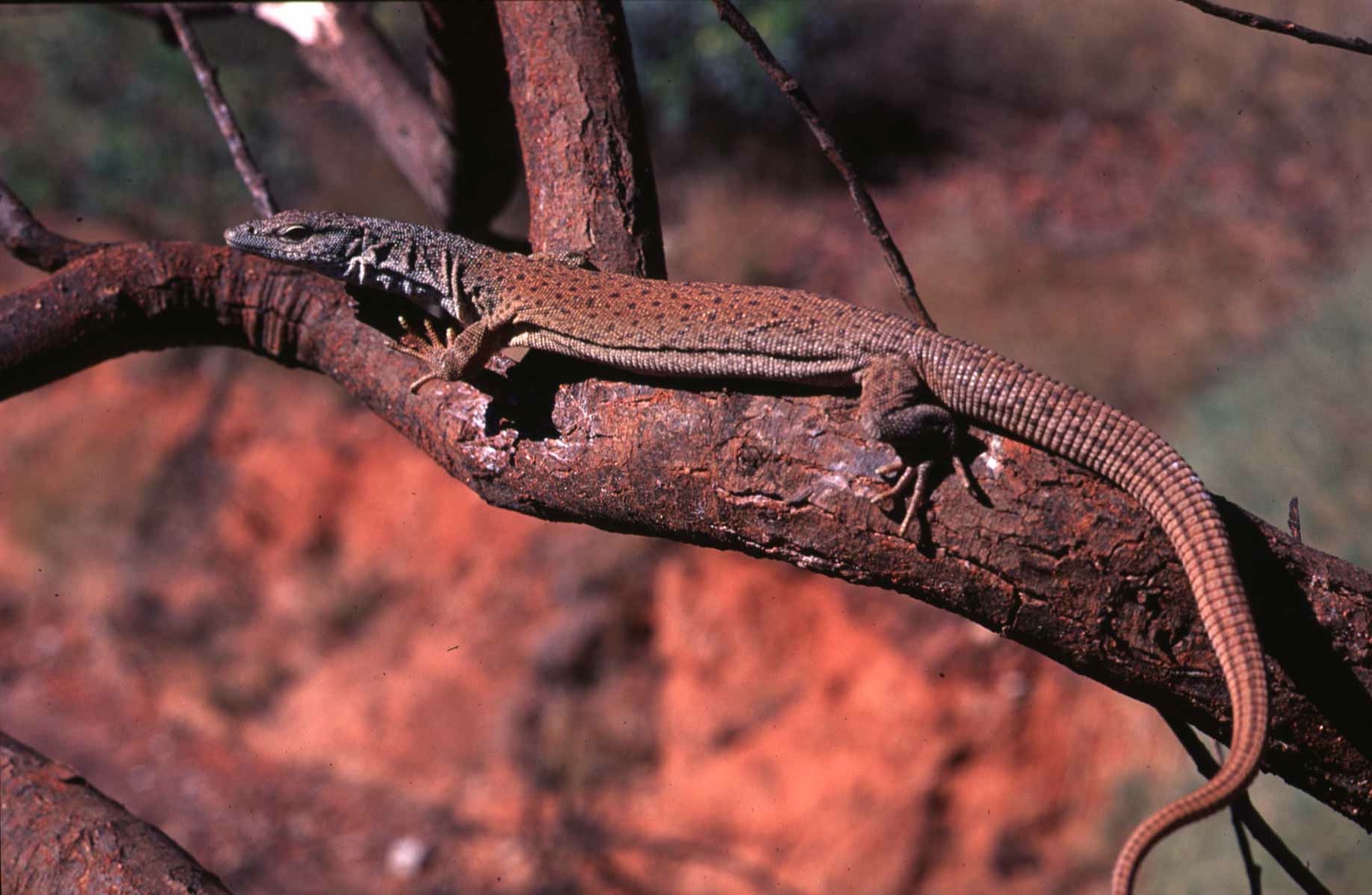|
Varanus caudolineatus 
This pygmy monitor species is semi-arboreal, preferring habitats with mulga trees, which offer small hollows that provide the lizards with tight-fitting safe diurnal and nocturnal retreats. However, caudolineatus do descend to the ground to forage, as evidenced by the fact that three of the thirteen active specimens observed were on the ground when first sighted. Moreover, one stomach contained a ground-dwelling Rhynchoedura ornata gecko (Pianka 1969b). Others contained tails and intact Gehyra, arboreal geckos. I have found autotomized tails in caudolineatus stomachs, suggesting that these monitors actually "harvest" the exceedingly fragile tails of geckos that are too large to subdue intact. Gut contents of a sample from Atley Station consist largely of scorpions and ground-dwelling spiders (Thompson and King, in prep.), and Thompson (1993) suggests that these monitors forage on the ground searching for prey by going down into their burrows. Movements of caudolineatus marked with a radioactive tracer were not nearly as extensive (Thompson 1993) as movements observed in other species of varanids, suggesting that these pygmy monitors may be fairly sedentary. Both sexes appear to mature at about 91 mm SVL, the size of the smallest male with enlarged testes and the smallest gravid female. One specimen with an SVL of 111 mm, estimated to weigh 15 gms, contained an intact 3 ml Gehyra (20% of its mass). Pianka, E. R. 1969. Notes on the biology of Varanus caudolineatus and Varanus gilleni. Western Australian Naturalist 11: 76- 82. Download pdf To read about other Varanus in the Great Victoria desert of Western Australia, click Desert Varanus. |